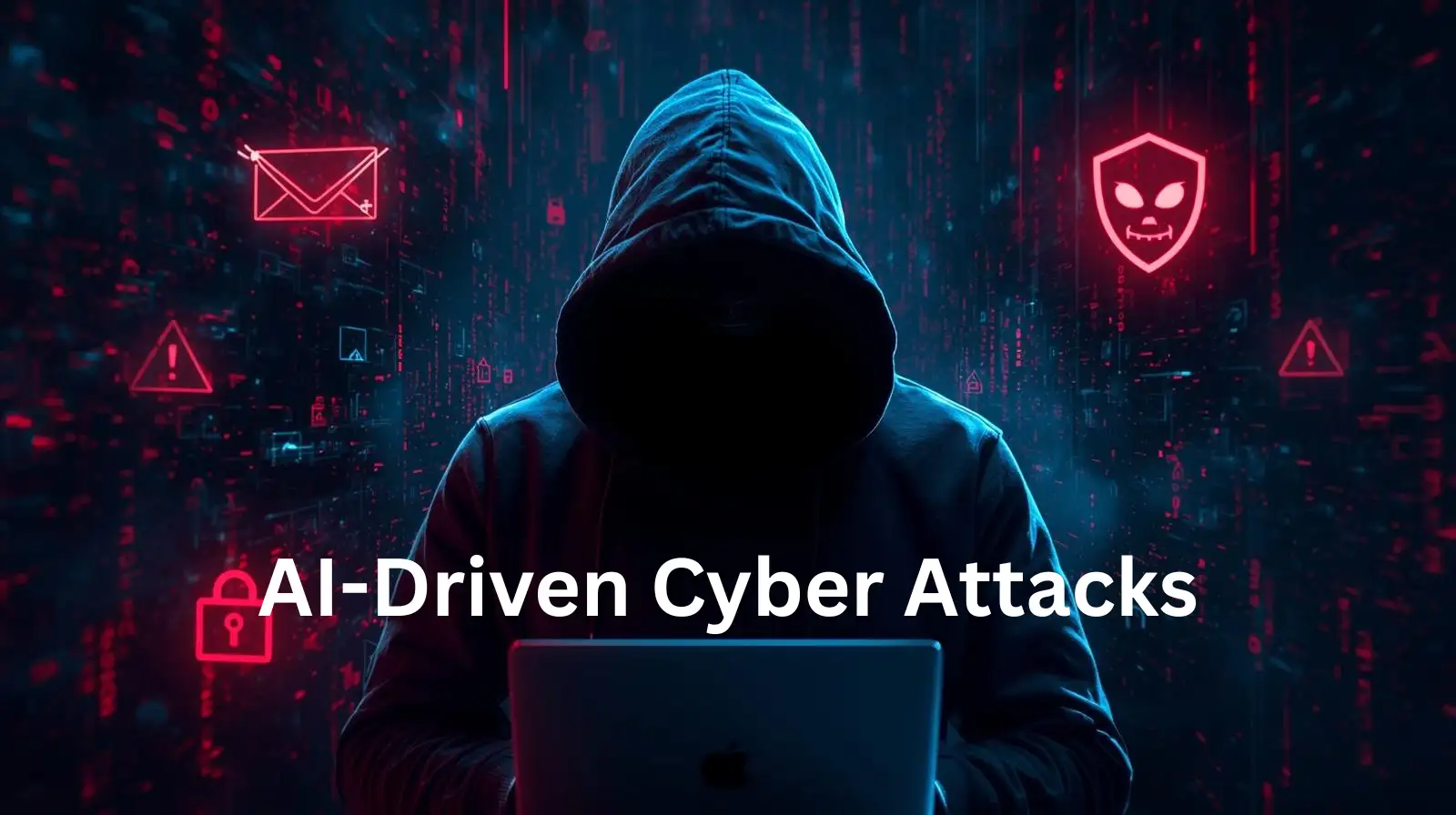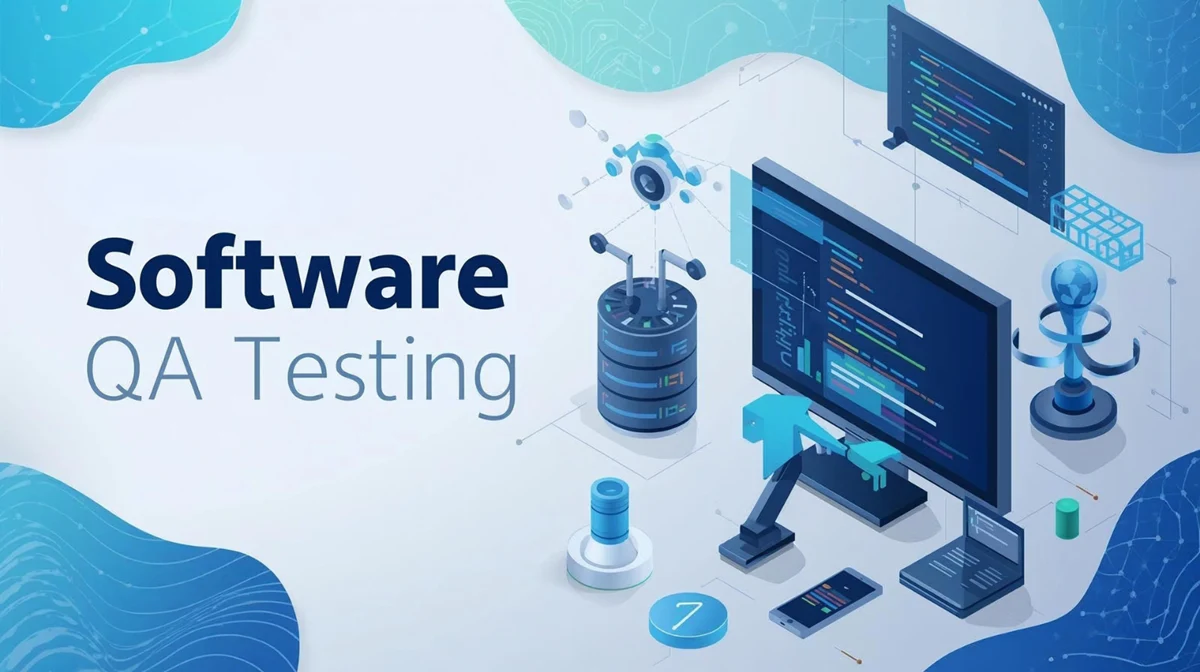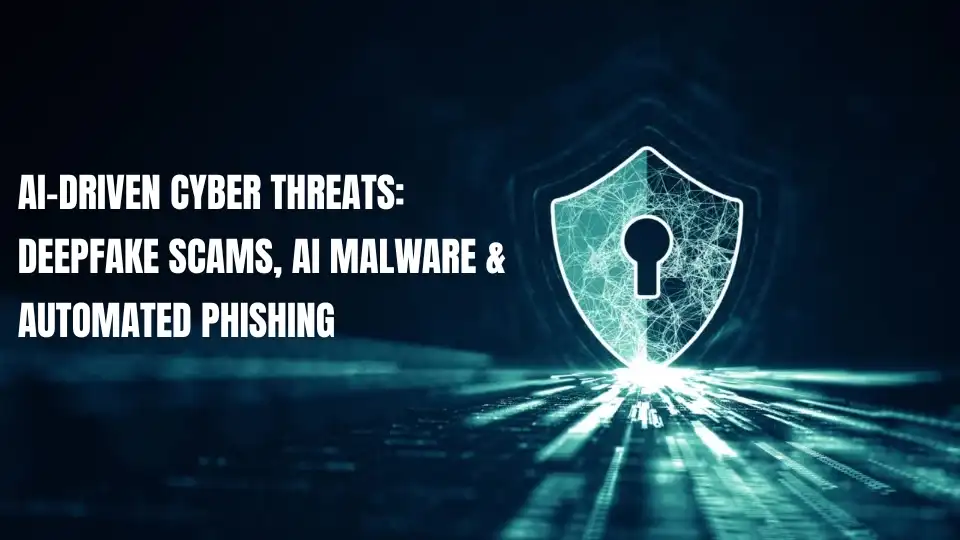
AI-Driven Cyber Attacks: How Deepfakes, AI Malware, and Automated Phishing Are Reshaping Cybersecurity
Artificial Intelligence (AI) is transforming industries worldwide — but it’s also arming cybercriminals with powerful tools. From deepfake scams to AI malware and automated phishing, attackers now use AI to mimic human behavior, voices, and appearances with alarming precision.
These AI-powered threats are harder to detect, scale faster than traditional attacks, and exploit the one thing technology often overlooks: human trust. For businesses and individuals, this represents a new era of cybersecurity risks that require equally intelligent defenses.
What Are AI-Driven Phishing Attacks?
AI-driven phishing attacks go beyond the generic, typo-filled emails of the past. By leveraging machine learning and natural language processing (NLP), attackers can:
- Mimic writing styles by analyzing emails, social posts, or online footprints.
- Personalize phishing messages using a victim’s name, role, or interests.
- Deploy AI chatbots to hold real-time conversations, impersonating customer service agents, managers, or co-workers.
🚨 Example: An AI chatbot imitating a company’s HR manager could trick employees into sharing login credentials during a “routine security update.”
The Rise of AI-Powered Cyber Threats
The cyber threat landscape is shifting rapidly, with AI at the core of this transformation. Once manual phishing emails or crude impersonation attempts have evolved into hyper-realistic scams that even seasoned professionals struggle to identify.
Examples include:
- Fake Zoom or Teams calls with AI-cloned CEOs instructing employees to transfer funds.
- Deepfake voice phishing, where attackers mimic executives in real-time.
- Automated mass phishing campaigns generate error-free, personalized emails at scale.
What Are Deepfake Scams?
Deepfakes utilize AI algorithms, often Generative Adversarial Networks (GANs), to create highly convincing fake videos, voices, or images.
Cybercriminals now weaponize deepfakes to:
- Bypass job screenings with AI-generated interviews.
- Mimic executives on calls to manipulate employees.
- Forge identity documents for fraudulent account creation.
🚨 Example: A European energy company lost millions when attackers used a deepfake audio of their CEO’s voice to authorize a fraudulent transfer.
Impact: Fraud, misinformation, reputational damage, and financial loss.
What Is AI Malware?
Unlike traditional malware, AI malware can learn and evolve to bypass detection. These threats continuously adapt after each failed attempt, making them far more resilient.
Types of AI Malware:
- Ransomware – Encrypts systems until payment is made.
- Trojan & Rootkits – Hide malicious activities inside trusted programs.
- Spyware – Steals sensitive user or business data.
- Viruses & Worms – Spread automatically across networks.
Impact: Data breaches, ransomware attacks, stolen credentials, and full system takeover.
What Are Automated Phishing Attacks?
Automated phishing leverages AI to craft flawless, convincing messages without the usual red flags.
- Email phishing: AI writes tailored, mistake-free phishing emails.
- Voice phishing (Vishing): Deepfake audio clones demand urgent transfers.
- Video phishing: Fake conference calls manipulate staff in real time.
- Social media impersonation: Bots create fake profiles to trick employees into revealing sensitive information.
Why Are AI-Powered Attacks So Dangerous?
| Factor | Impact |
|---|---|
| Personalization | Tailored phishing emails with personal details |
| Scalability | Thousands of attacks at once with minimal effort |
| Realism | Deepfake videos and voices are nearly indistinguishable from reality |
| Evasion | AI adapts to bypass filters, firewalls, and traditional security tools |
Consequences for Businesses & Individuals
- 💸 Financial losses from fraud and ransomware.
- 🕵️ Identity theft through stolen credentials.
- 🏢 Reputation damage affecting customer trust.
- 🔒 Increased demand for AI-driven cybersecurity solutions.
How to Defend Against AI-Powered Attacks
While these threats are alarming, businesses and individuals can take proactive steps to minimize risks:
- Adopt AI-powered detection tools – Use cybersecurity solutions that detect deepfakes, unusual patterns, and adaptive malware.
- Train employees regularly – Cyber awareness programs help staff recognize suspicious emails, calls, and requests.
- Implement Multi-Factor Authentication (MFA) – Prevent unauthorized access even if credentials are stolen.
- Apply Zero Trust Architecture – Never assume trust; always verify identities and access requests.
- Regular updates & patching – Ensure systems, apps, and firewalls are up to date against evolving threats.
AI-powered threats such as deepfake scams, AI malware, and automated phishing represent a paradigm shift in cybersecurity. These attacks are smarter, faster, and more convincing than anything we’ve faced before. However, with education, Zero Trust strategies, and AI-driven defenses, organizations and individuals can outpace cybercriminals.
🔐 At Ambala IT, we help businesses stay one step ahead by combining cutting-edge cybersecurity solutions with expert guidance to defend against today’s most advanced digital threats.





